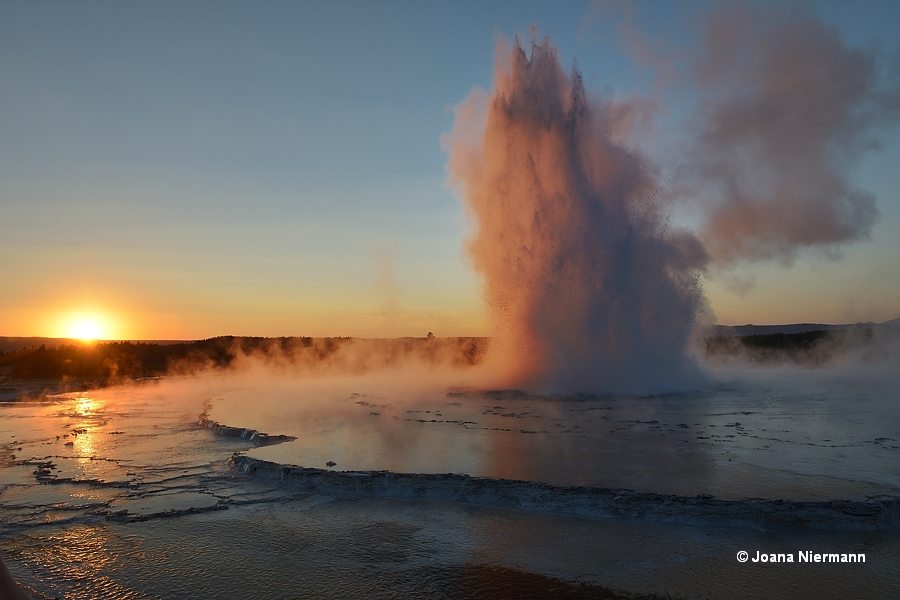Firehole Lake Drive, Great Fountain Group
Five eye-catching groups of hydrothermal features are lined up along Firehole Lake Drive. Since it is a one-way road, visitors inevitably first come across the Great Fountain Group on the lefthand side of the road and the White Creek Group on the right side.
First feature on the left is Lemon Spring, which shows a pronounced rising and falling of the water level, accompanied by eruptions of some feet height on rare occasions. It is often exhibiting a yellow to orange rim of thermophilic bacteria around its blue-green bowl, hence the name.
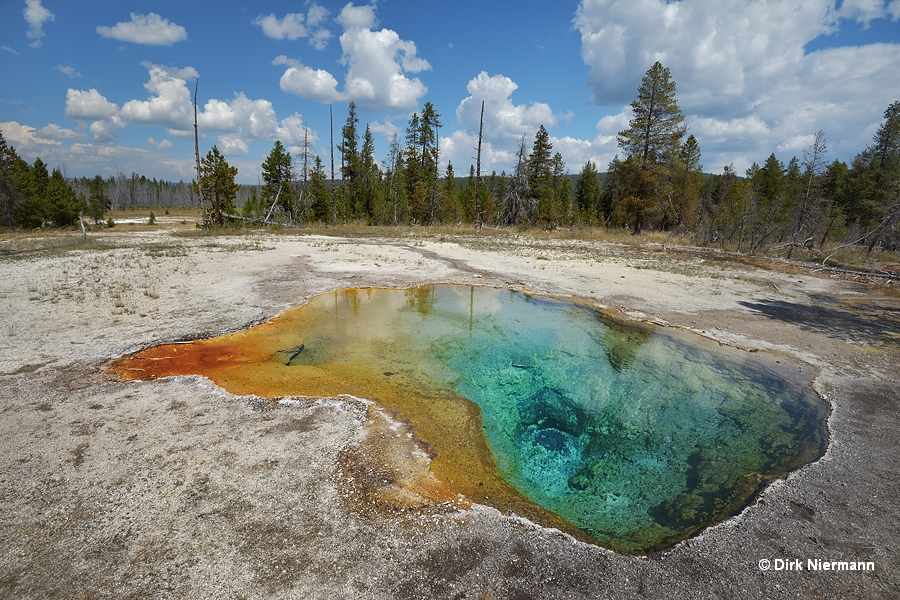
Lemon Spring is also known for changing its temperature on a slow cycle. The growth of orange thermophilic bacteria is a very good indicator for this, ranging from narrow traces along the shallow sections of the edge at high temperatures through to a coverage of the entire bottom of the pool at lower temperatures.
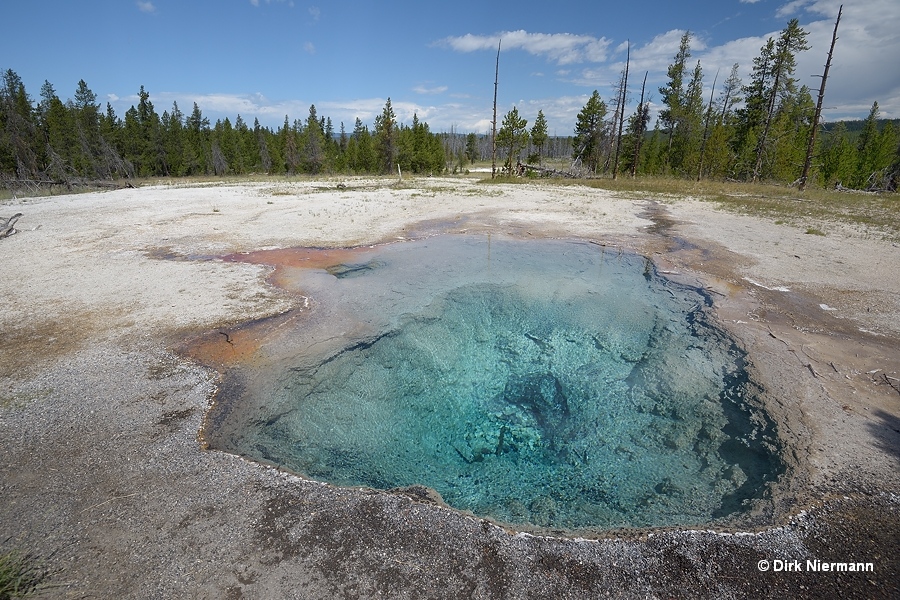
When you proceed east to the next roadway turnout, the quiet Broken Egg Spring at its very beginning is easy to miss because subsequent Firehole Spring draws all attention to itself.
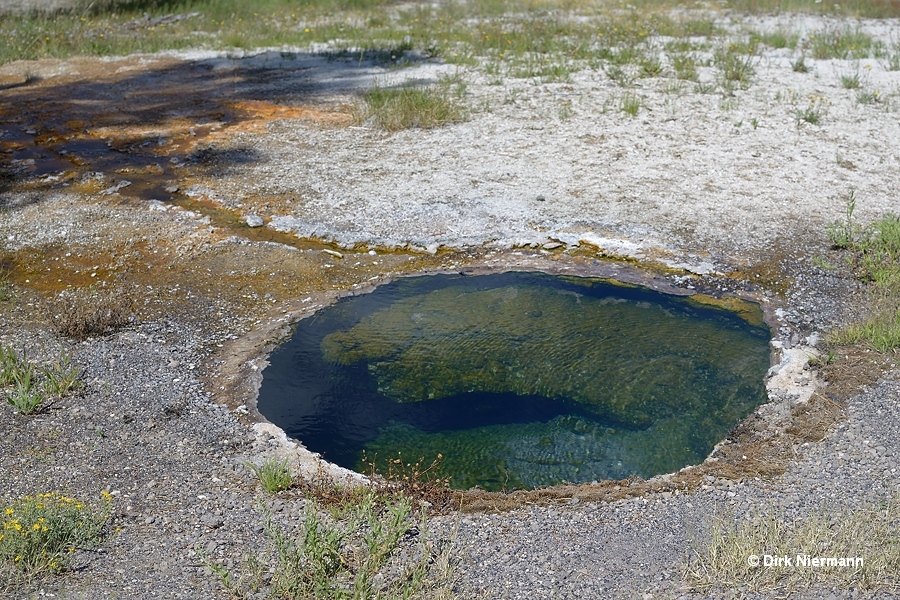
Firehole Spring, one of the most colorful pools of Yellowstone, shows more or less perpetual spouting caused by a combination of superheated boiling and some large, rising steam and gas bubbles.
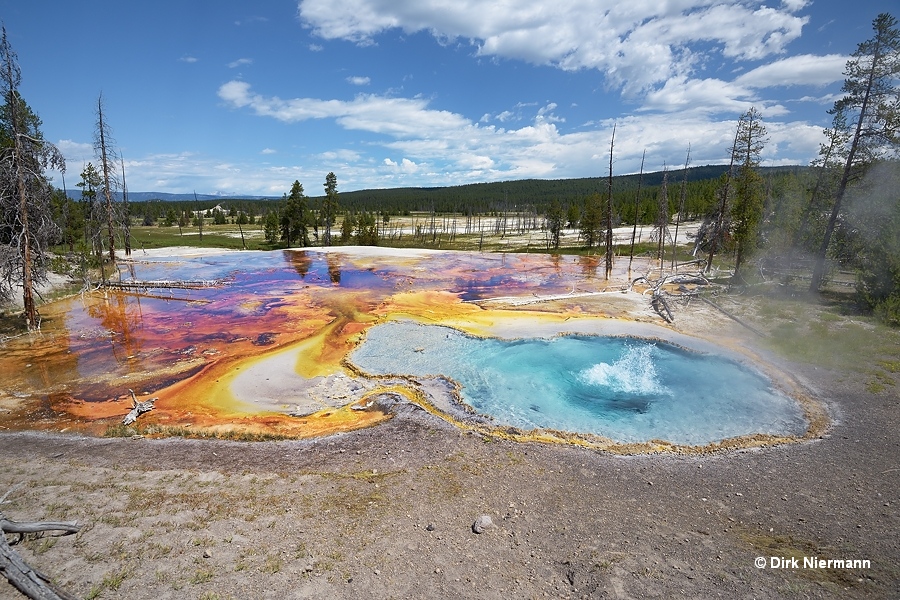
In the same way Surprise Pool is served by an own turnout. It's boiling, but has never been seen erupting.
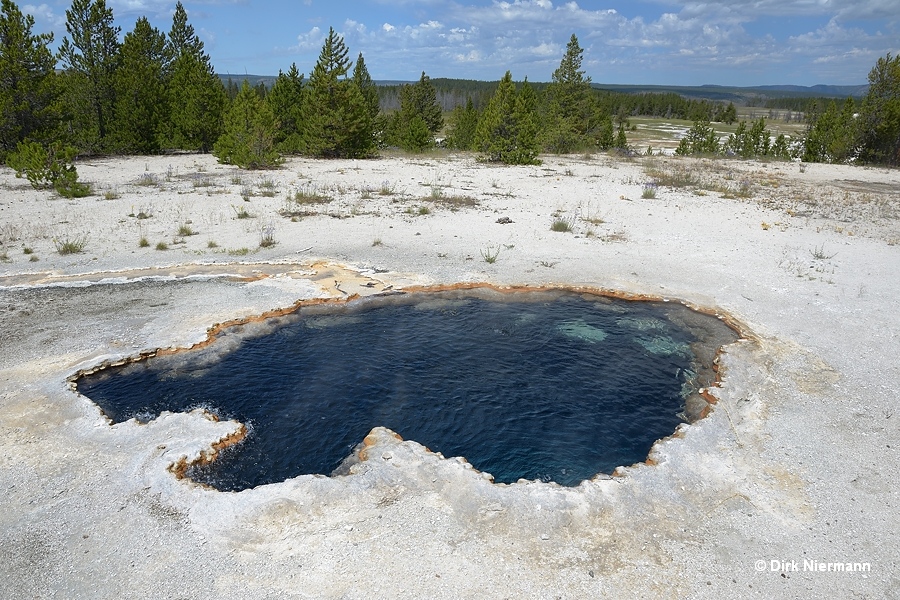
Great Fountain Geyser is the most popular feature at Firehole Lake Drive. It's one of the major geysers of Yellowstone, and eruption time predictions are usually available at the visitor center. Typically, intervals range from 8 to 15 hours. An upcoming eruption announces itself by a sequence of well-known events. Between 2 to 1 hours in advance, the water level of the central pool rises up to overflow, followed by a boiling around the edges only. A few minutes before the first burst the boiling briefly creates an up to 1 m (3 feet) high dome in center of the pool. Moments later an overwhelming spectacle takes place, which you have to see with your own eyes because a description can't do it justice.
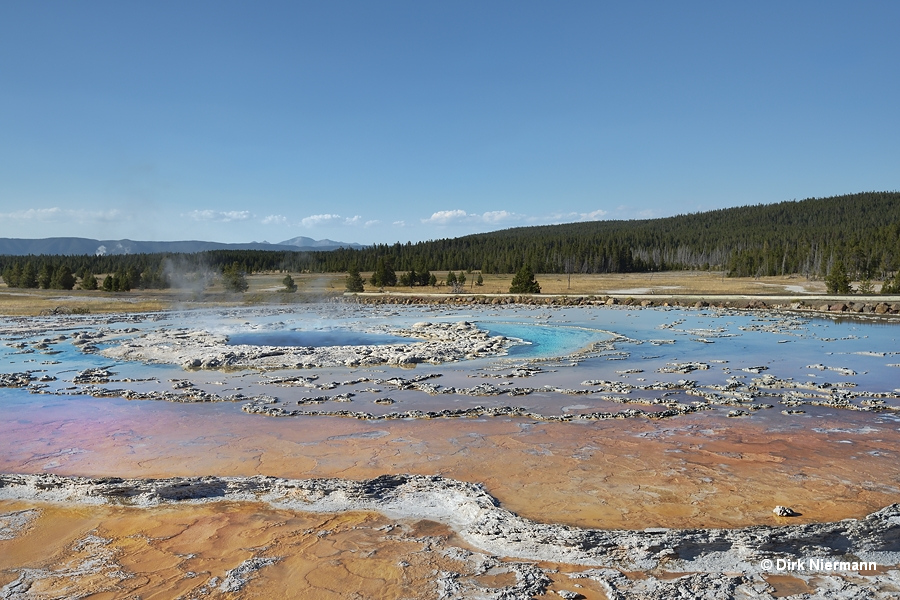
Great Fountain's fan-shaped eruptions are simply magnificent, and on top of that the accessible observation area east and south of the geyser with the Lower Basin flat in background permits to see the up to 45 m (150 feet) high water column against the setting sun. Of course, this will succeed only if times of eruption and sunset coincide, that's the decisive factor. If you are very lucky, you may even witness a so-called "superburst", starting with a giant blue bubble and jetting up to 70 m (230 feet) high into the air.
